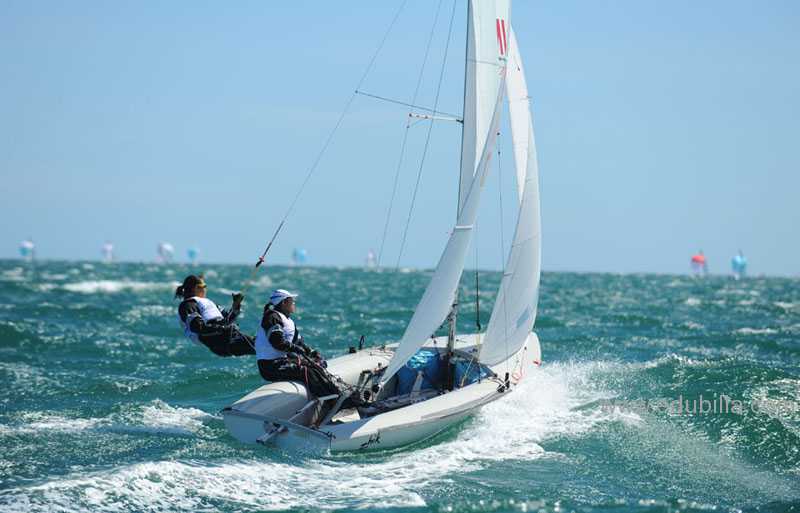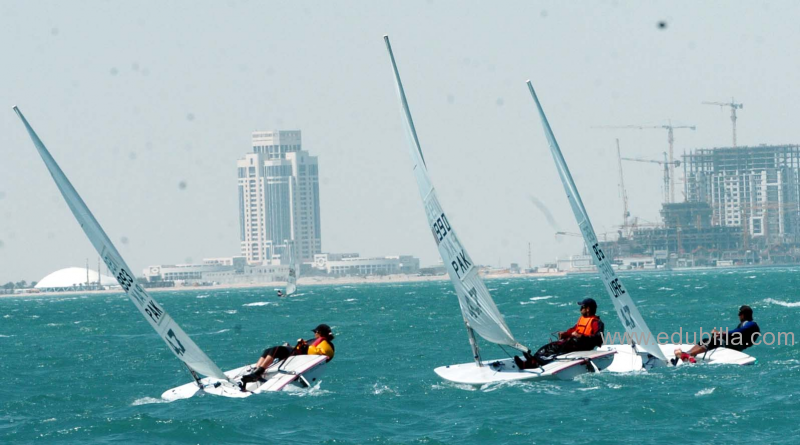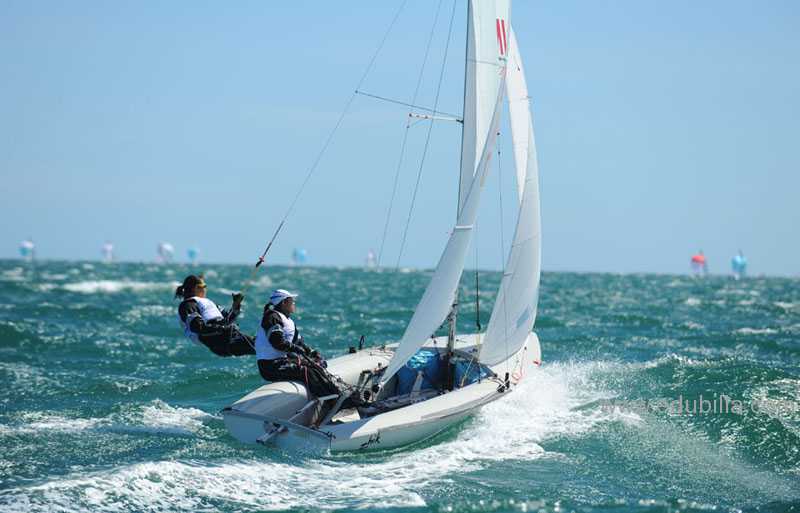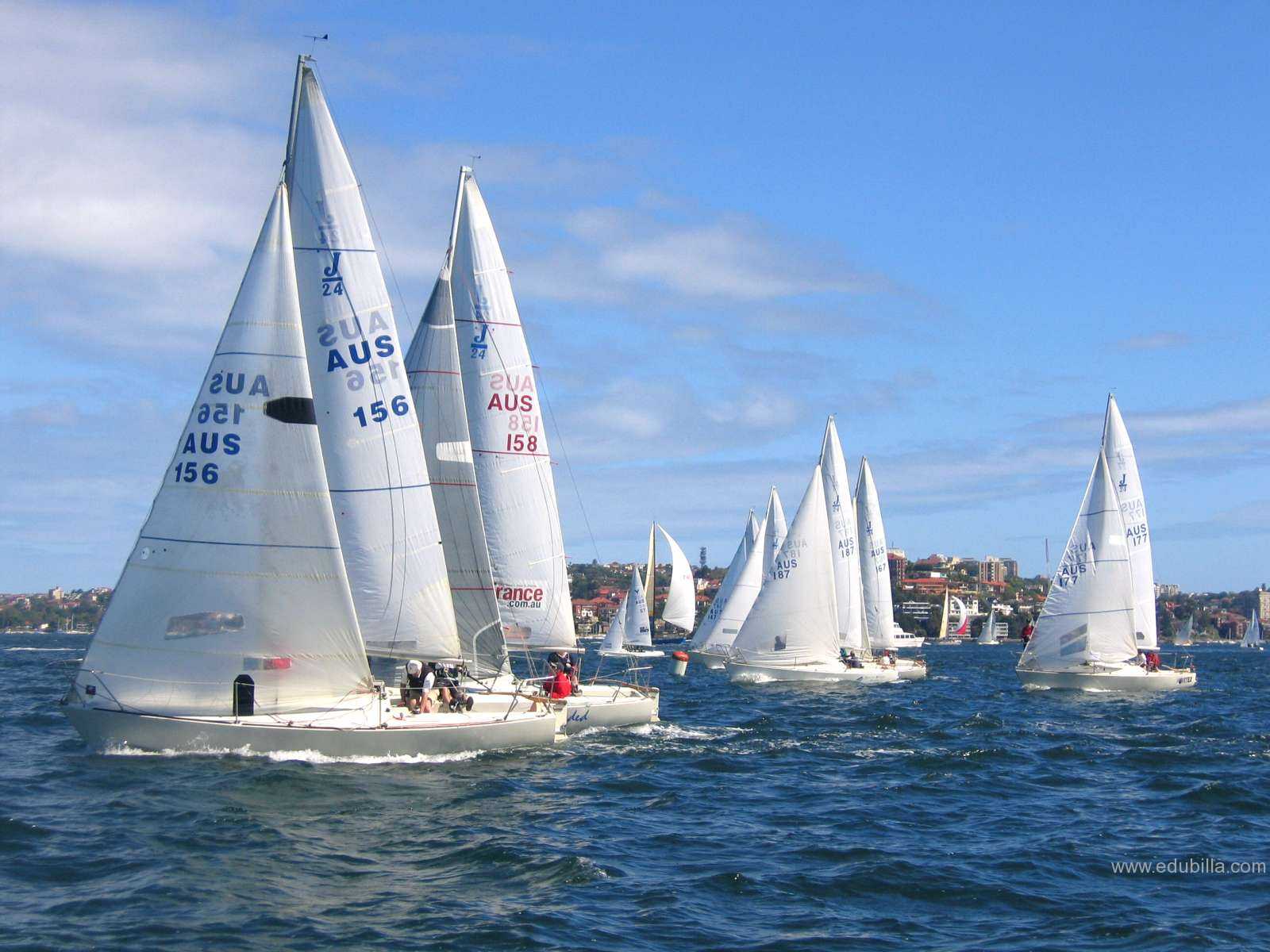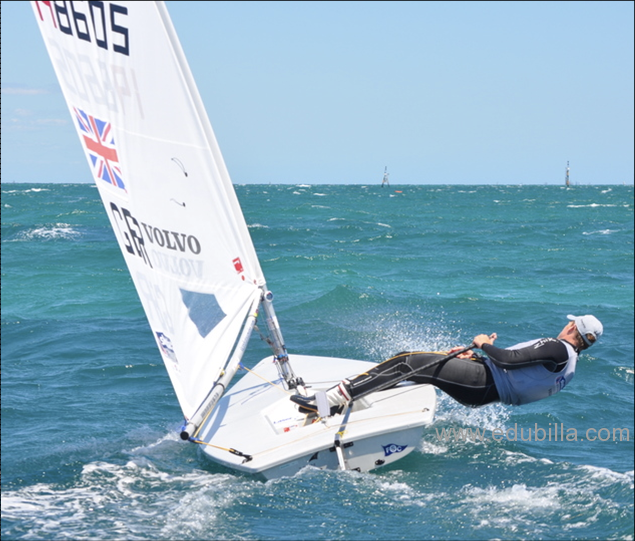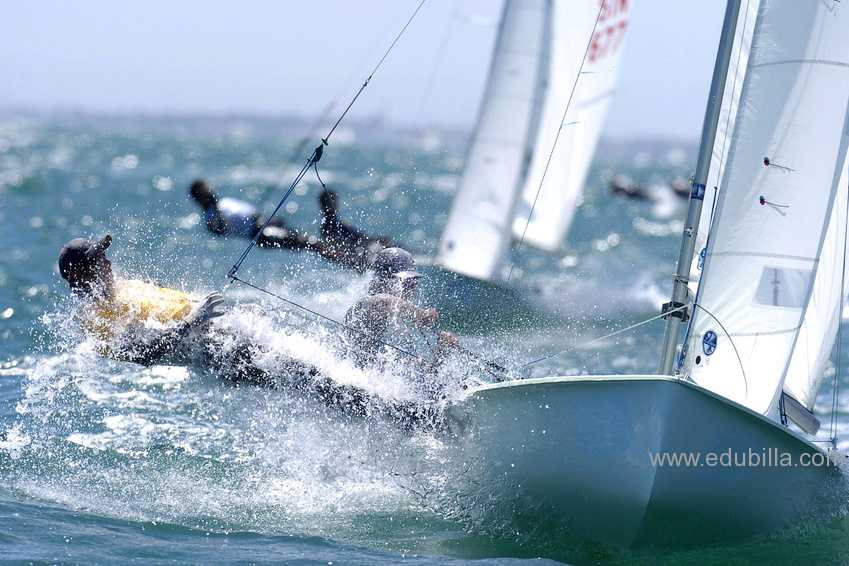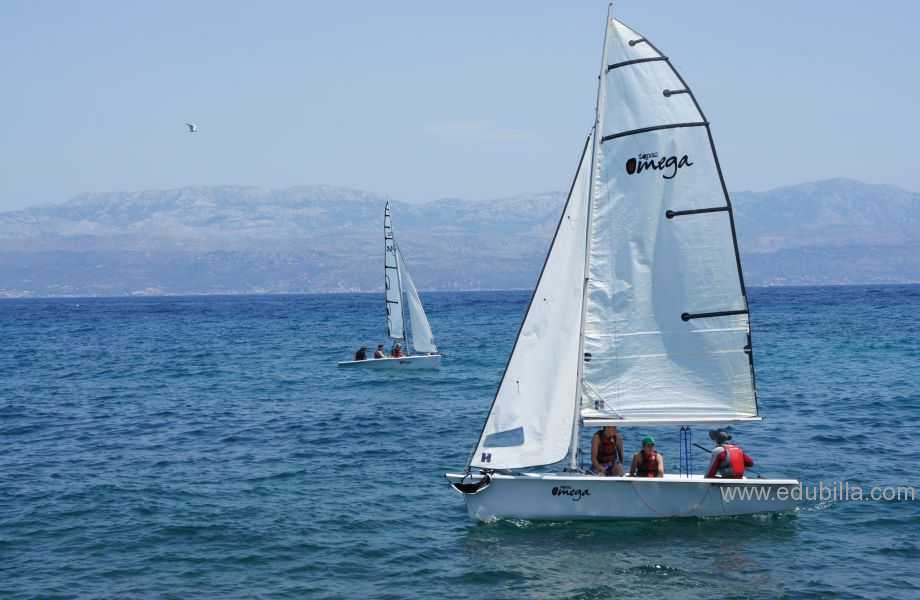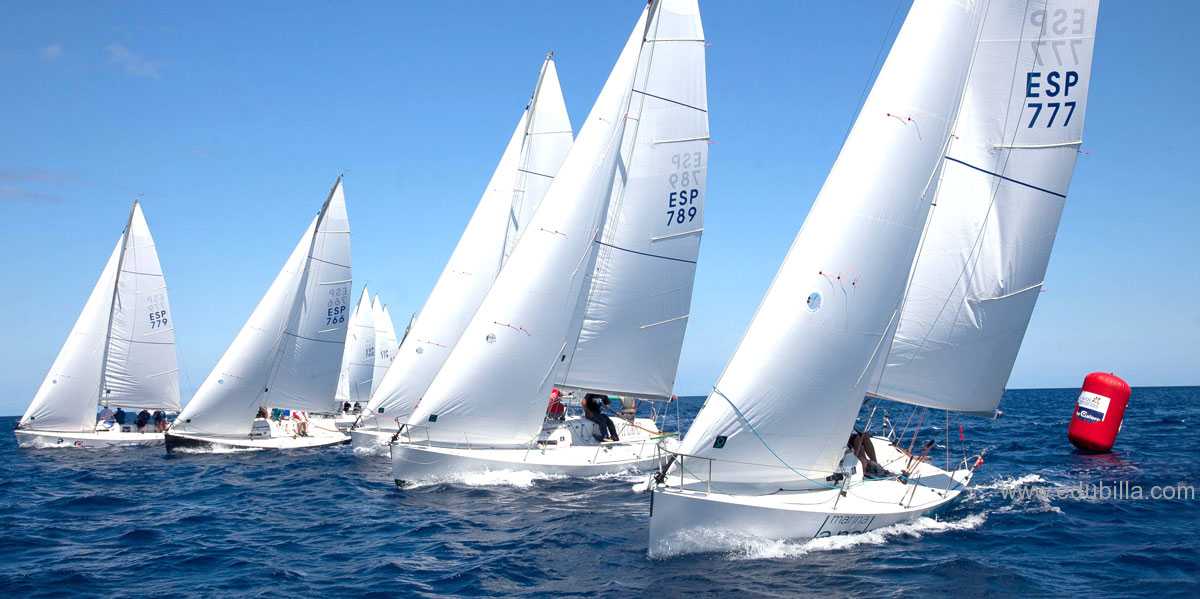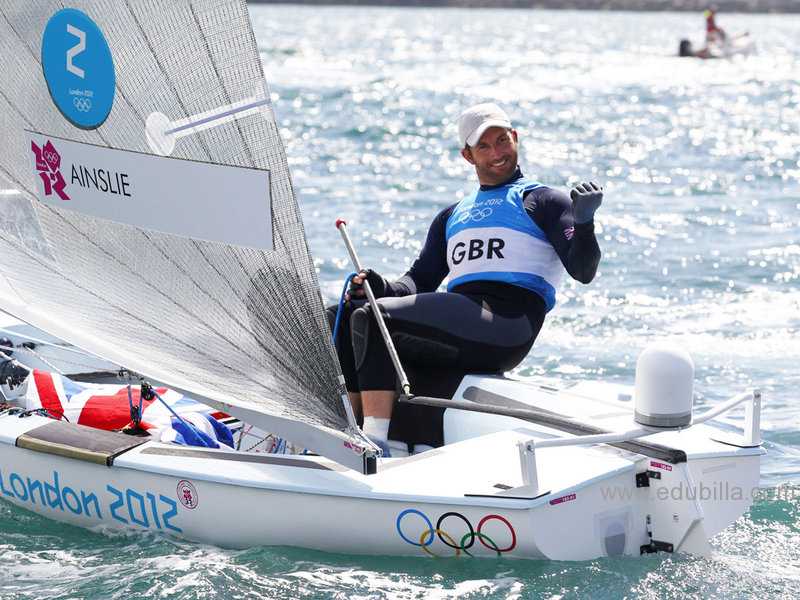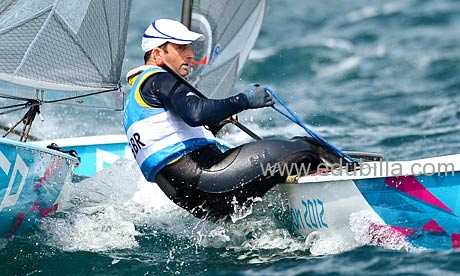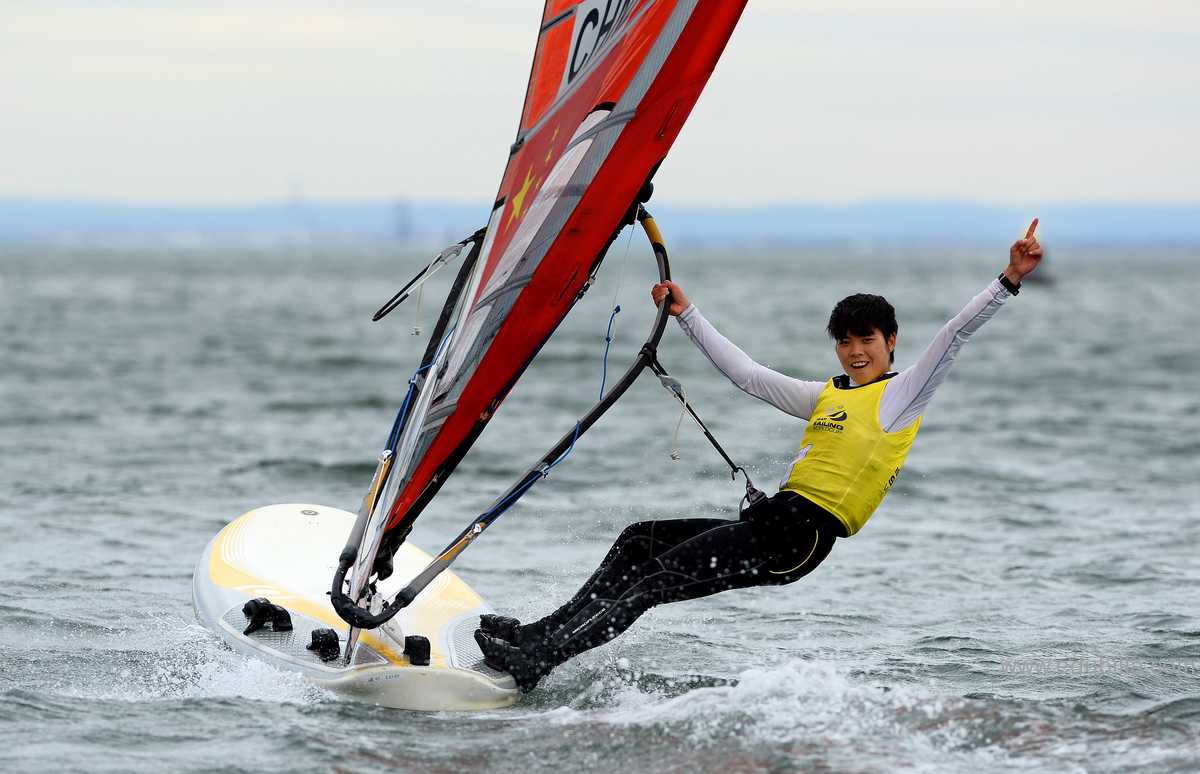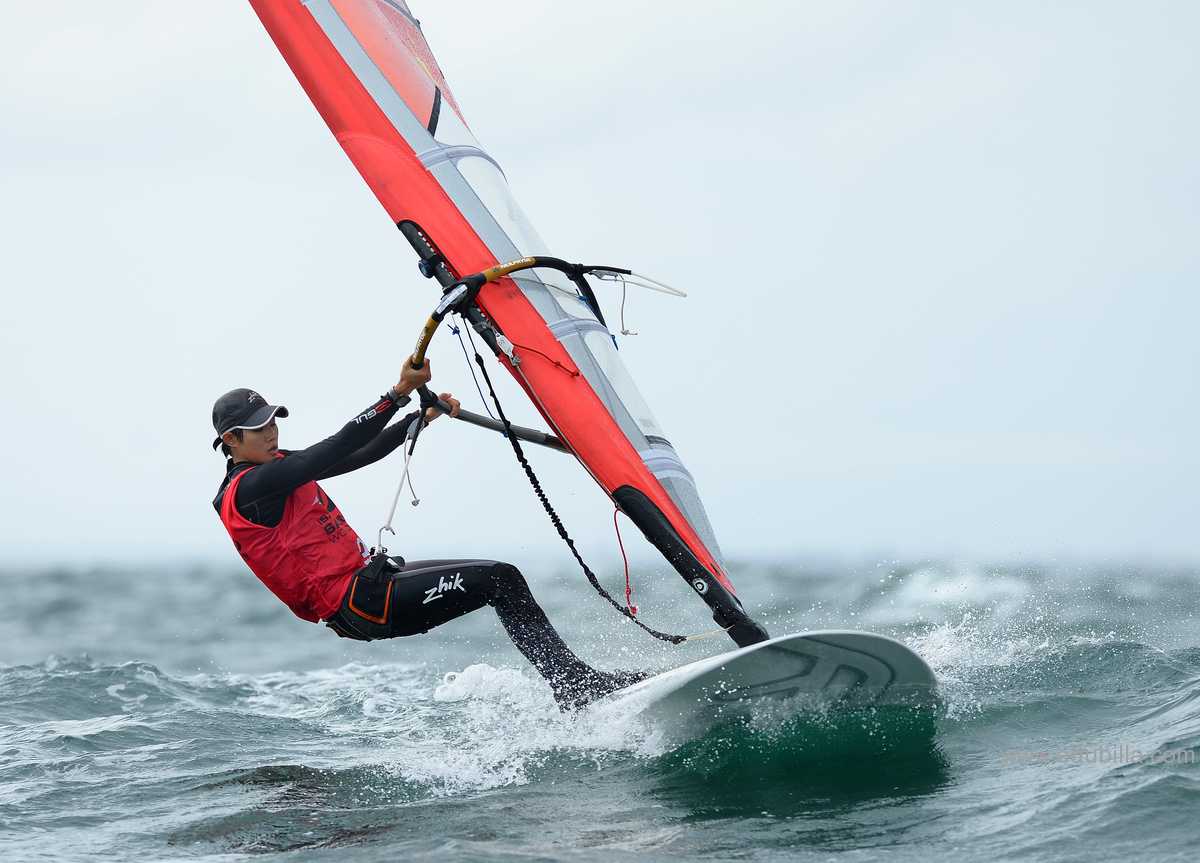
Overview Of Sailing
Sailing is the propulsion of a vehicle and the control of its movement with large (usually fabric) foils called sails. By changing the rigging, rudder, and sometimes the keel or centreboard, a sailor manages the force of the wind on the sails in order to move the vessel relative to its surrounding medium (typically water, but also land and ice) and change its direction and speed. Mastery of the skill requires experience in varying wind and sea conditions, as well as knowledge concerning sailboats themselves and an understanding of one's surroundings.
While there are still some places in the world where sail-powered passenger, fishing and trading vessels are used, these craft have become rarer as internal combustion engines have become economically viable in even the poorest and most remote areas. In most countries sailing is enjoyed as a recreational activity or as a sport. Recreational sailing or yachting can be divided into racing and cruising. Cruising can include extended offshore and ocean-crossing trips, coastal sailing within sight of land, and daysailing.
Game Rules
1997 saw the most dramatic simplification to the Racing Rules of Sailing since the 1940s. They are based on four main right of way rules:
1.Boats on a port tack shall keep clear of boats on starboard tack (Rule 10).
2.When boats are on the same tack and overlapped, the boat to windward (the boat closest to the wind) shall keep clear of a leeward boat (Rule 11).
3.When boats are on the same tack and not overlapped, the boat that is astern shall keep clear of the boat ahead. (Rule 12).
4.When a boat is tacking (changing tack) it shall keep clear of boats that are not tacking (Rule 13).
Four rules with general limitations:
1.Even if you have right-of-way, it is your duty to avoid a collision, once it becomes apparent that the other boat is not keeping clear (Rule 14).
2.If you acquire right of way, you must initially give the other boat room to keep clear, unless you get right of way because of the other boat's actions. (Rule 15)
3.A boat that changes course, even if it has the right-of-way, shall do so in a manner that gives the burdened boat a chance to "keep clear" (Rule 16).
4.If you catch up with another boat and you want to pass it to leeward, you may not sail above your proper course i.e. you shall not luff higher than you would have done if that boat wasn't there (
Mastering sailing basics means being familiar with essential right-of-way sailing rules. One thing to remember is that there are different right-of-way sailing instructions for sailboats as opposed to powerboats. Continue reading below for a helpful overview of basic sailing rules, based on the COLREGS (International Regulations for Avoiding Collisions at Sea):
1. Always maintain a proper lookout by sight as well as hearing to avoid colliding with other boats
2. Maintain a safe speed at all times so that you remain in control of your boat
3. Use common sense when assessing risk of collision with other boats near and around you
4. Port tack gives way to starboard tack: If two sailboats are approaching each other and the wind is on a different side of each boat, then sailing rules are that the sailboat which has the wind on the port side must always give right of way to the other. (The port side is the left-hand side of the boat when you are facing the front.)
5. Windward gives way to leeward: If two sailboats are approaching each other and the wind is on the same side of each boat, then sailing rules are that the vessel which is to windward (the direction of the wind) must give the right of way to the vessel which is leeward (the opposite direction of the wind).
6. If you are at risk of colliding with another boat and all else fails, then agreed sailing rules are that whichever boat has the other boat on its starboard side must yield right of way. (The starboard is the right-hand side of the boat when you are facing the front.)
7. Any vessel overtaking another should always keep out of the way of the vessel being overtaken.
8. A sailboat should always keep out of the way of any boat that is: a) not under command, b) restricted in its ability to maneuver, and c) engaged in fishing
9. When passing through a narrow channel, sailing instructions are to keep as close to the outer edge as possible.
10. Non-commercial powerboats usually give way to sailboats, unless the sailboat is overtaking it. However, general sailing instructions are also that sailboats should try to stay out of the way of large vessels and ferryboats that may find it harder to slow or change direction—especially in narrow channels.
Detailed Sailing Rules Can Be Downloaded From Documents
Equipments Need For Sailing
Ballast:
Extra weight carried for stability, usually lodged in the keel.
Boom:
A horizontal pole or spar to which the bottom of a sail is attached.
Catamaran:
A boat with parallel twin hulls.
Centreboard:
A movable, fin-shaped protrusion under the hull that prevents a boat from sliding sideways and is used to right capsized dinghies.
Dinghy:
A small sailing boat or rowing boat.
Elliott 6m:
A three person keelboat used for women's match racing at the Olympic Games and making its debut in 2012.
Finn:
A one person centreboard dinghy class used for open competition in the Olympic Games. It was first used at the Olympic Games in 1952 and has been part of every Olympic Games since.
Forestay:
The rigging that secures the mast forward.
49er:
A two person, high-performance dinghy class with a low hull and wings, used for open competition in the Olympic Games.
470:
A two person dinghy class used for men's and women's competition in the Olympic Games. It was the equipment for the first women’s sailing event in the 1988 Olympic Games.
Genoa:
The larger triangular forward sail in a sloop-rigged boat.
Headsail:
The sail in front of the mast.
Hull:
The main body of a vessel.
Jib:
The smaller triangular forward sail in a sloop-rigged boat.
Keel:
A fixed, fin-shaped protrusion on the bottom of the hull that prevents a boat from sliding sideways.
Keelboat:
A sailing boat with a fixed keel.
Kite:
Colloquial for "spinnaker", a large, billowing, often colourful sail used to obtain greater boat speed during downwind sailing, usually set in front of or instead of the jib and carried by the 470, 49er and Elliott 6m Olympic classes.
Laser:
A one person centreboard dinghy class, the most popular one-design class in the world, used for men-only competition in the Olympic Games.
Laser radial:
A one person centreboard dinghy class, with a slightly smaller rig and sails than the “Laser”, used for women-only competition in the Olympic Games. The Laser Radial made its Olympic debut in 2008.
Mainsail:
The larger sail behind the mast.
Mainsheet:
The rope which controls the movement of a mainsail.
Mast:
A vertical spar or pole to which a sail or sails attach.
Rig:
Term used to collectively refer to the mast, sails and supporting wires.
RS:X :
A windsurfer class used for men's and women's competition in the Olympic Games. The RS:X made its Olympic debut in 2008.
Rudder:
A vertical board hinged to the back of a boat that turns the craft.
Sailboard:
A lightweight, surfboard-like craft with a mast, boom and sail, on which the rider stands; also known as a "windsurfer".
Sheet:
A rope used to control and tension the sail.
Skiff:
A lightweight, high performance dinghy used for men's competition in the Olympic Games
Skud18:
A two person keelboat used for open competition at the Paralympic Games.
Sloop rig:
A sail plan composed of two sails - a mainsail and a jib, or genoa.
Sonar:
A three-person keelboat used for open competition in the Paralympic Games.
Spar:
A general term referring to a boat's mast, boom and spinnaker pole, usually of an aluminium or carbon-fibre composition.
Spinnaker:
A large, billowing, often colourful sail used to obtain greater boat speed during downwind sailing, usually set in front of or instead of the jib and carried by the 470, 49er and Elliott 6m Olympic classes; also known as a "kite".
Star:
A two-person keelboat used for men's competition in the Olympic Games. The oldest Olympic Class, having made its debut at the 1932 Games.
Stay:
A strong rope, commonly made of wire, used to support a mast.
Tiller:
A handle attached to the rudder and used by the skipper to control steering.
Tornado:
A two-person catamaran class was used in open competition in the Olympic Games from 1976 to 2008.
Trapeze:
Gear fitted to enable crew to put all of their weight outboard. The crew wears a harness which attaches to a wire attached to the mast.Used by the 470 and 49er Olympic classes.
2.4MR:
A one person, displacement keelboat class used for open competition in the Paralympic Games.
Windsurfer:
A lightweight, surfboard-like craft with a mast, boom and sail, on which the rider stands; also known as a "sailboard".
Yngling:
A three person keelboat used for women-only competition at the Olympic Games in 2004 and 2008.
History Of Sailing
Throughout history sailing has been instrumental in the development of civilization, affording humanity greater mobility than travel over land, whether for trade, transport or warfare, and the capacity for fishing. The earliest representation of a ship under sail appears on a painted disc found in Kuwait dating between 5000 and 5500 BCE.Sailing is the art of moving a boat by harnessing the power of wind. Mastery over ever-changing conditions requires both great skill and experience.
America’s Cup:
International yacht racing began in 1851 when a syndicate of members of the New York Yacht Club built a 101-foot schooner named America. The yacht was sailed to England where it won a trophy called the Hundred Guineas Cup in a race around the Isle of Wight. The trophy was renamed The America's Cup and remained in the hands of the United States until 1983, when an Australian yacht finally brought to an end the New York Yacht Club’s 132-year winning streak.
Evolving design:
Sailing was first contested as an Olympic sport at the 1900 Paris Games. Since then, the classes of boats allowed to compete have continually evolved to reflect advances in yacht design and technology. Equipment advances over the past 20 years have created a trend towards smaller and lighter craft, placing ever greater demands on both the athletic and technical capacities of the sailors.
Class rules:
The sport is organised under a single set of rules for racing published by the International Sailing Federation (ISAF). Olympic racing is now conducted with boats categorised into one-design classes based on similar weights and measurements.
Fleet racing and match racing:
Races are sailed in what is known as a fleet racing format: fleets of equally-matched boats racing around the same course area at the same time. Courses are designed to incorporate a variety of different sailing angles: upwind, downwind and reaching.
A new feature for the 2012 Games is the introduction of a match racing event for women: a head-to-head contest of strategy and tactics between teams on two identical boats.
Origin Of Sailing
Although sailing as a means of transportation predates history, sport sailing—or yachting—seems to have originated in the 17th cent. in Holland. From there it was introduced into England (c.1660) by Charles II, and eventually spread to the American colonies. Then, as now, it was common for sport sailors to join together for social and recreational purposes in groups known as yacht clubs. The world's first such club was founded (1720) at Cork, Ireland.
New York Yacht Club (NYYC):
The oldest continuously existing club in the United States is the New York Yacht Club (NYYC; founded 1844). In 1851 members of the NYYC raced the schooner America against British competitors around England's Isle of Wight. Victorious, they deeded their trophy to the NYYC. It became known as the America 's Cup, giving its name to the oldest and most prestigious event in international sailboat racing.
sailing ships:
The first sailing boats had single masts with square sails fixed to them. Over the centuries, boatbuilders arranged their boats' sails, called the rig, in various ways designed to catch the wind more efficiently. A square rig consists of sails hung on a spar across the boat. The fore-and-aft rig, with a triangular sail hanging from a spar parallel with the boat’s sides, is more effective at making the best use of wind blowing from side on. By the 15th century, many ships had a mixture of rigs: square-rigged sails on some masts and fore-and-aft sails on others. Ships (large vessels) could now sail across the oceans.
Ancient Egypt:
By about 3400 BC, the first sailing ships were in use on the River Nile in Egypt. The hulls of the earliest ships were made of papyrus reeds bundled together. Later, wood from acacia or sycamore trees was used, although only short lengths could be cut from these timbers. They had a single mast with a square sail, which was used in addition to oars when the wind was blowing in a favourable direction. The crew steered with long oars hanging over the stern.
From 2900 BC, Egyptian merchants began to import cedar, a wood from which much longer planks could be sawn. Later Egyptian vessels were built with keels and a ribbed frame, copying the designs of merchant ships from Minoan Crete. Warships of this construction sailed under the command of Pharaoh Ramesses III in about 1400 BC.
Phoenician hippo:
Active between 1500 and 1000 BC, the Phoenicians founded the coastal cities of Sidon and Tyre on the eastern shores of the Mediterranean Sea. They traded their manufactures, including glassware and dyes, for linen, oil, ivory and other goods with cities around the Mediterranean coast. The Phoenicians relied on their sturdy seagoing cargo ships, called hippoi, and their own expert seamanship.
Governing Bodies
International Sailing Federation (ISAF):
The International Sailing Federation (ISAF) is the world governing body for the sport of sailing, officially recognized by the International Olympic Committee (IOC).
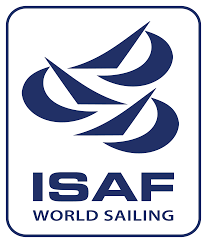
ISAF is responsible for:
- the promotion of the sport internationally;
- managing sailing at the Olympic and Paralympic Games;
- developing the Racing Rules of Sailing and regulations for all sailing competitions;
- the training of judges, umpires and other administrators;
- the development of the sport around the world; and
- representing the sailors in all matters concerning the sport.
Objects:
The objects and aims for which the International Sailing Federation, as the controlling authority of the sport of sailing in all its forms throughout the world, is established are:
(a) to act as and carry out the functions and duties of such authority;
(b) to promote the sport of sailing in all its branches regardless of race, religion, gender or political affiliation;
(c) to establish, supervise, interpret and amend the rules regulating sailboat racing and to adjudicate disputes and take any appropriate disciplinary action (including the imposition of appropriate penalties);
(d) to act as the supervising organisation for the sport of sailing, to grant and withdraw international or recognised status to or from classes of boats and to prescribe the relevant rules and measurement procedures;
(e) to act as the organising authority of the Olympic Sailing Regatta;
(f) to control, organise, conduct, license or sanction other championships, sailing events or activities;
(g) to examine, study, investigate, consider and report on all matters affecting the sport of sailing and any persons interested therein or associated therewith and to collect, analyse and distribute information, statistics, opinions and reports thereon;
(h) to represent and protect the interests of any member of the Federation;
(i) to convene, arrange, organise and hold regattas, races and competitions of all sorts, to create and stimulate interest in and publicise the sport of sailing, to convene, arrange, organise and hold exhibitions, shows, displays, meetings, seminars, conferences and discussions, and to provide prizes, bursaries, grants and awards for competitors and others;
(j) to provide administrative services of any sort whatsoever for any association, union, society, club, committee, body or person interested in or associated with sailing in any of its forms.
To Visit ISAF Click Here
Awards Related To Sailing
US Sailing Awards:
US Sailing’s ROLEX Yachtsman & Yachtswoman of the Year Awards:
Established in 1961 by US Sailing and sponsored by Rolex Watch U.S.A. since 1980, the Yachtsman of the Year award recognizes one male sailor for his individual outstanding on-the-water achievement within the calendar year; the Yachtswoman of the Year award recognizes one female sailor for her individual outstanding on-the-water achievement within the calendar year.
Nathanael G. Herreshoff Trophy:
The Nathanael G. Herreshoff Trophy is US Sailing’s most prestigious award. It was donated in 1957 by the National Marine Manufacturer’s Association, and is awarded annually to an individual who has made an outstanding contribution to the sport of sailing in this country in any associated activity.
The Arthur B. Hanson Rescue Medal:
The Arthur B. Hanson Rescue Medal is an award given to skippers of pleasure boats or race support vessels who effect rescues of victims from the water. The award is made for rescues in U.S. waters, or those which occur in races originating or terminating in a U.S. port. The purposes of the award are to recognize the significant accomplishment in seamanship which has saved a life, and to collect further case studies in rescues for analysis for the US Sailing Safety-at-Sea Committee which will eventually be incorporated into the extensive educational programs of US Sailing. - See more at:
C.R.E.W Award:
The C.R.E.W. Award recognizes an individual — a US Sailing staff member or volunteer — who consistently demonstrates the values expressed in the C.R.E.W. agreement. Because US Sailing has an extraordinary set of responsibilities as a world leader in the sport, its volunteers and staff must function as efficiently as a skilled sailing crew.
ISAF AWARDS & TROPHIES:
The International Sailing Federation (ISAF) presents the following awards:
- ISAF Rolex World Sailor of the Year Award - an annual award presented to one male and one female winner.
- ISAF Beppe Croce Trophy - a trophy presented to an individual in recognition of their outstanding contribution to the sport of sailing.
- ISAF Hall of Fame - created in 2007 to celebrate sailing heroes who have acheived greatness in the sport of sailing.
- ISAF Medals - gold and silver medals presented in recognition of outstanding service to the International Sailing Federation
Sample Documents Of Sailing
-Viswanathan Anan

